Nearly 1 million people last year bought either the Toyota RAV4 or Honda CR-V in the US. But what if you want to be a little different and you want the ability to find your car in a parking lot? Well, Subaru and Mazda each present another choice in the compact SUV segment: the Forester and CX-5. The Forester is brand-new for 2025 and the CX-5 has reliably been Mazda’s best-seller for years. So, who wins in a 2025 Subaru Forester vs. 2025 Mazda CX-5 battle? Let’s go ahead and find out!
Pricing and Equipment
So, first off, let’s discuss pricing for these family SUVs.
Starting with the luxurious Mazda CX-5, we have the fully loaded Signature trim level. All in, this Mazda carries a price of just over $42,000.
CX-5 (Signature AWD): $40,600 | Options: +$240 | Destination: $1,420 | Total: $42,020
Moving to the all-new Subie, its top trim is called Touring [p] and it also comes standard with everything. After destination, its grand total is about $600 less than the CX-5.
Forester (Touring AWD): $39,995 | Options: +$0 | Destination: $1,395 | Total: $41,390
Exterior Design
Starting with the exteriors, these two brands have gone in completely different design directions. The CX-5, in typical Mazda fashion, goes for a classy and elegant approach; meanwhile, the Subaru goes for a rugged and outdoorsy look. Flanking the sides of each of their grilles, we have our lighting. Surprisingly, both come with extremely premium headlights for the segment that are not only projector LED but also have adaptive bending abilities. However, it’s only the Forester that also includes fog lamps.
Continuing to the sides, the Forester got even bigger for 2025 which means it’s now a substantial 4 inches longer than the CX-5. Let that be a hint regarding interior space later, but for now, you’ll find large 19-inch alloys on both the Forester and CX-5 with completely different designs. While not point worthy, something to keep in mind is that Forester has tough matte wheel surrounds compared to body color on the CX-5, which might matter to you depending on what your taste is.
Length: 179.1-inches (CX-5) | 183.3-inches (Forester)
Next up, we have the rears. Their design themes continue, and as far as features, they have spoilers, rear wipers, and exposed exhausts. However, it’s only the Mazda that includes a fully LED taillight unit.
If you’re looking to tow, the CX-5 will be your better choice at 2,000 lbs. vs. the Forester’s 1,500 lbs.
Towing: 2,000 lbs. (CX-5) | 1,500 lbs. (Forester)
Additional Features
Now moving on to some individual features, you’ll find nicely done mirrors. They have BSM, heating, LED turn signals, and in the case of the CX-5, are even power folding.
But these are family SUVs after all, and one of the really nice things about these two is that all four of your major active safety features are included standard. In addition, they even have rear auto braking in their top trims. Finally, their warranties mirror one another identically and neither includes complimentary maintenance.
Warranties (Both): Basic: 3yr/36k mi | Powertrain: 5yr/60k mi | Compl. Maintenance: N/A
It’s been a tight race so far, and it’s now time to compare the interiors.
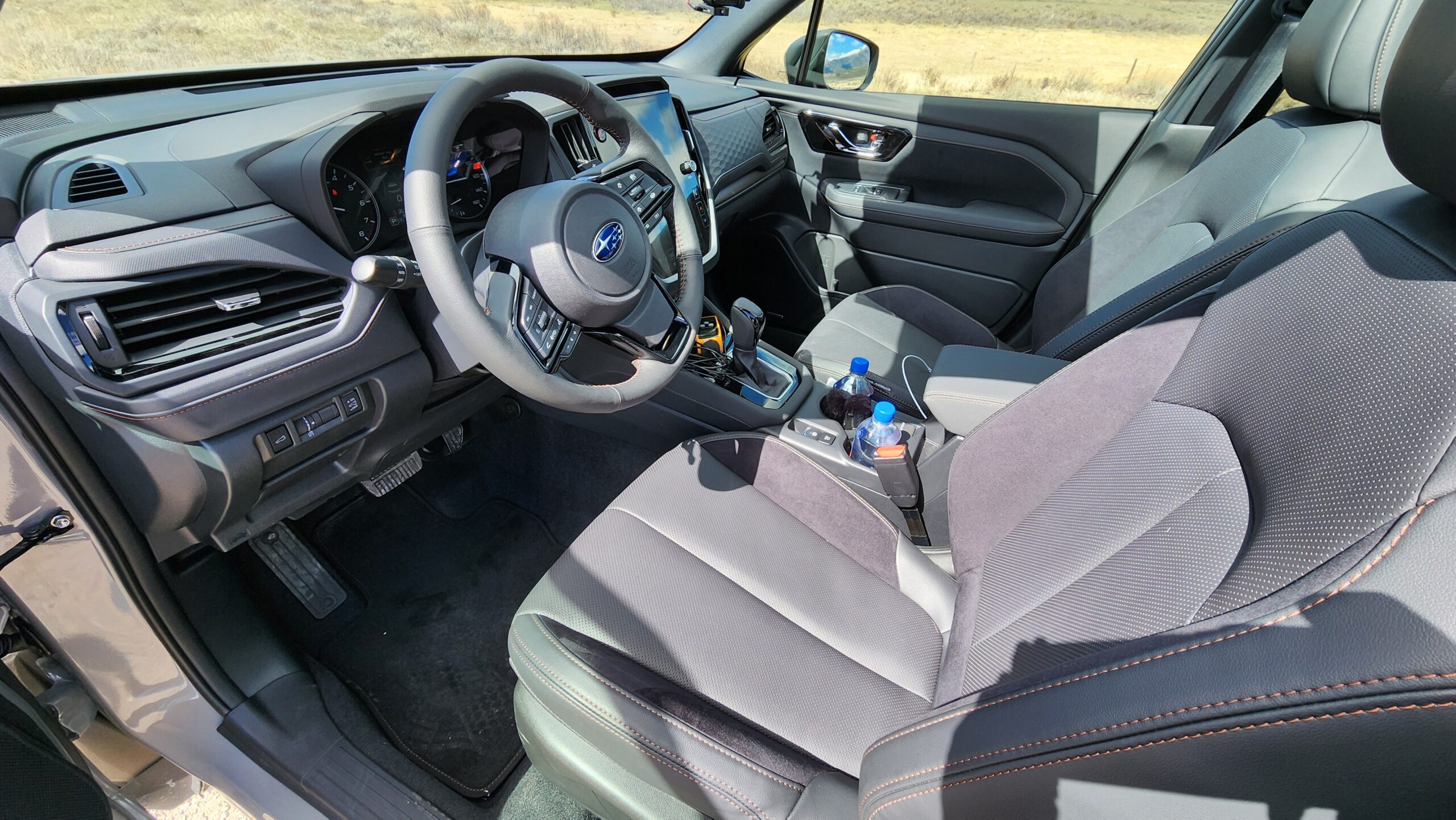
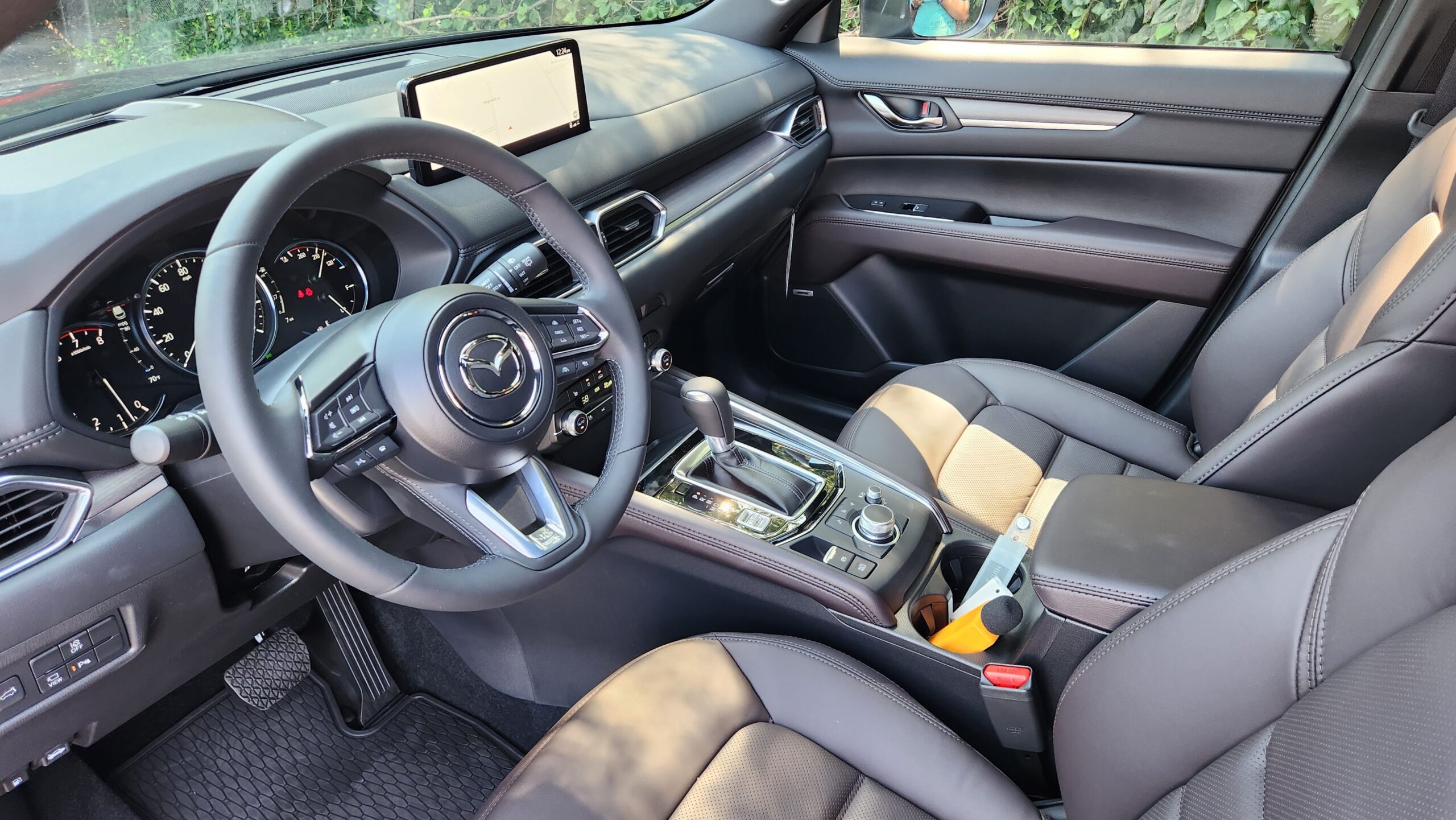
Interior Design
Approaching both SUVs, they have smart entry systems with nice key fobs. Remote start is available via their brand’s respective apps.
Note: It is included free during the trial period.
Only the Forester has sensors behind the door handles to unlock, and after opening the doors, you’re going to see quite a bit more luxury than you might have expected with these top spec models.
Before we dig into the features, let’s start with the seats themselves. Nicely enough, both are including are real leather seats. The Forester’s is finished in a leather and suede mix, and the CX-5 gets a full Nappa leather seat. That means its grade of leather is more premium than the Subaru and feels nicer to touch.
For seat adjustability, both come in the same with 10-way power adjustment with 2-way lumbar support. They also match each other tit-for-tat with features including seat heating, ventilation and memory.
But now once we’re inside the cabins, let’s check out the major point category of material quality. In this regard, both have great cabins for this segment with premium materials. The Mazda stands out as being one of the very nicest options. It uses real open pore wood, loads of leatherette and soft plastic, and wherever you touch feels incredibly well built. It’ll take the materials point here.
After startup, you’ll see a pretty big difference. Despite being all-new, Subaru still has the traditional gauge cluster design with a 4.2-inch display in the middle. The older CX-5 doesn’t have a full digital display either but is including a larger 7-inch half digital gauge cluster with more customizability.
Adding to its advantages, it also includes a head-up display which is something not offered on the new Forester.
Moving back past that, they both have heated, leather-wrapped steering wheels, along with rain sensing wipers.
Storage and Technology
Now it’s time to evaluate another major interior section: storage. Here, the two of them are more similar than they are different. They have reasonably big center consoles, cupholders in front of that, and wireless phone charging pads. We’ll call this area a tie, but know some of the other options in the segment do include more front storage space.
Part of the reason for others having more space is because both still have traditional shifters. When in reverse, you’ll see a 360-degree camera on both the CX-5 and Forester. That’s a new feature to the Subaru this year.
For climate, both have dual-zone automatic setups with physical buttons for the main temperature adjustment. But if you need to mess with any of the extra controls in the Forester, the interface can be laggy when you first turn on the vehicle.
And for audio, each has their respective upgraded audio systems. That means the CX-5 has a Bose system and the Subaru a Harmon Kardon system. Let’s take a listen.
Both have good audio quality, but we’d give the slight edge to the Harmon Kardon in the Subaru.
Forester: 11-speakers Harmon Kardon
Bose: 10-speaker Bose Centerpointe Surround Sound
But one of the things most important to buyers nowadays is your in-car technology. The Mazda comes in with a 10.25-inch display while the all-new Forester adopts the large 11.7-inch display from other Subaru products this year. That’s 13% more screen real estate, but more importantly is how you interact with the screens. While the Mazda is technically a touchscreen, that’s only if you are using Apple CarPlay and Android Auto interfaces, and otherwise you’re using a control knob. In the real world, that’s a lot harder to use, and as far as functionality, both include integrated navigation systems and wireless Apple CarPlay and Android Auto.
As we wrap up the front of the cabins, both have auto-dimming mirrors with garage door openers, plus the Forester adds the rear camera ability.
Lastly, both have sunroofs to let air in but the Subaru definitely lets more air in with its panoramic style setup that is about twice as large as the CX-5’s standard size.
LOOKING TO BUY One OF THEse VEHICLES?
A smart next step would be to check our Car Quote Tool. This tool will connect you with local dealerships in your area to get you the BEST price, access to INVOICE PRICING information, and a monthly payment calculator. Get dealerships to compete for your business!
Rear Seats and Cargo
Now as we head around to the back seats, remember how I said the Forester is 4 inches longer than the CX-5? Well, that’ll show here. While Mazda claims the legroom is almost the same as the Forester, as you can clearly see, the Forester has a significant advantage. After spending extensive time with both models, the Forester will certainly have the more comfortable rear seat.
Forester: Legroom: 39.4 inches | Headroom: 39.6 inches
CX-5: Legroom: 39.6-inches | Headroom: 39.0 inches
Now that that’s out of the way, they also have quite a few features that once again match each other. Both give you two USB ports, rear vents, as well as reclining and heated back seats.
Now let’s see how much stuff you can bring along with you for the journey. While both have power tailgates, only the Forester gives you a hands-free option.
Once they open up, you’ll find an interesting dynamic. The Mazda surprisingly has about an 11% advantage behind the second row, but that advantage dissipates with the seats folded and it has 10 cubic feet less maximum space than the Forester.
CX-5: Behind 2nd Row: 30.9 cu. ft. | Maximum: 59.6 cubic feet
Forester: Behind 2nd row: 27.5 cu. ft | Maximum: 69.1 cu. ft (w/ pano)
As far as other features, they match each other closely. They have spare tires and handles to fold the seats from the cargo area, but only the Mazda’s seats fold 40/20/40 split to allow for maximum passengers while hauling a long object.
This has been a tight battle so far, and the driving experience between these two are quite different, so let’s go ahead and dive into that!

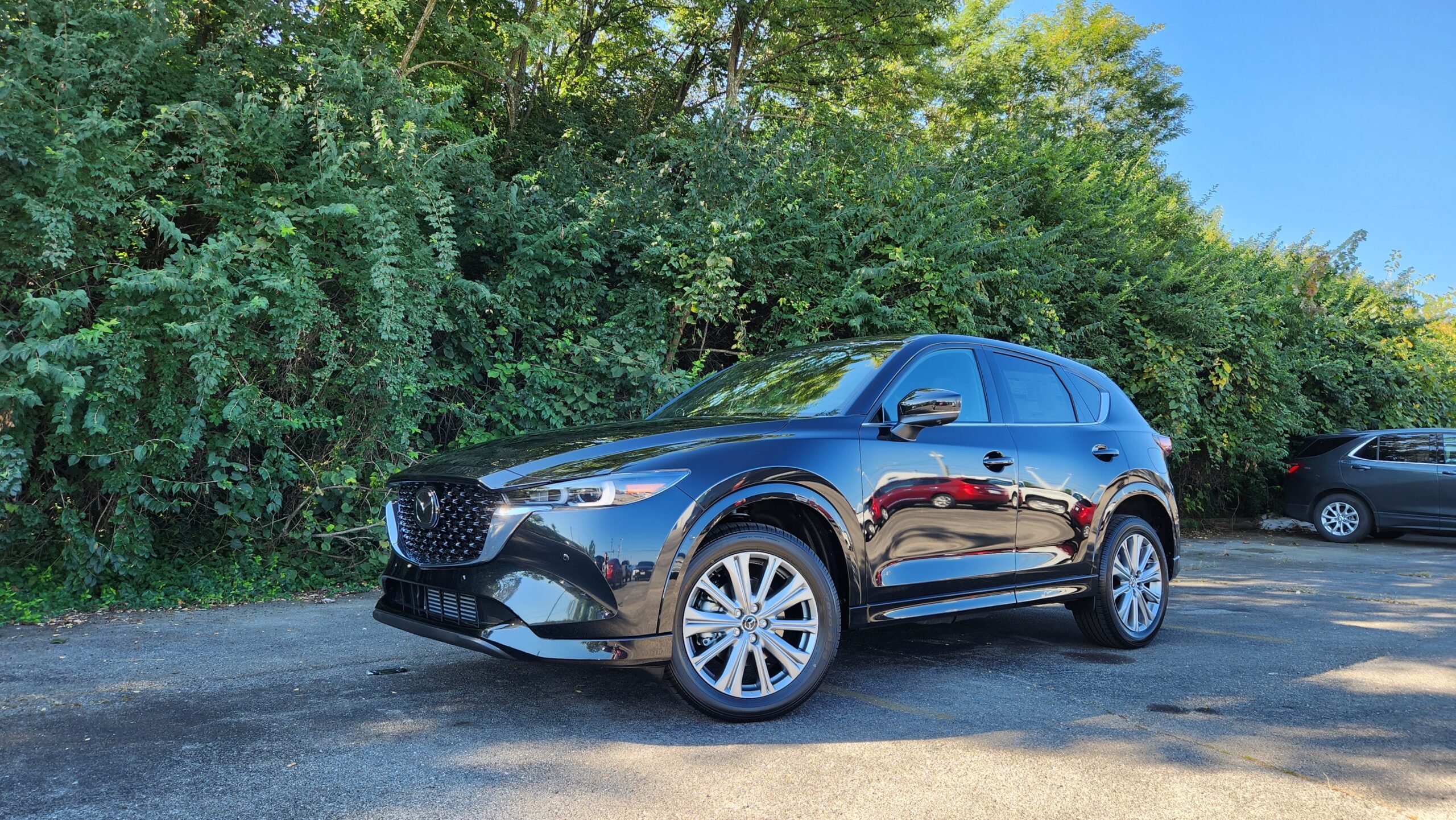
Powertrains
The driving experience for these two crossovers is very different. That begins with what’s under the hood. The all-new Subaru Forester has a naturally aspirated 2.5L Boxer-4 for 2025, while the CX-5 Signature is one of the only segment options to still include a powerful turbocharged engine on top trims. That means it has a massive power and torque advantage by as much as 60% and will accelerate much faster to 60.
CX-5: 2.5L Turbo I-4: 256 hp | 320 lb.ft of torque
Forester: 2.5L Boxer-4: 180 hp | 178 lb.ft
When it comes to transmissions, the Mazda has a tried-and-true 6-speed automatic compared to the Subaru’s CVT. While many prefer a traditional transmission’s feel, it can be a little slow to shift at times, so we’ll call this area even.
Test Drive and Fuel Economy
Now what’s not even is the off-road capability. Here, the Forester pulls ahead with greater ground clearance and while both have standard AWD, it’s only the Forester’s that has symmetrical full-time AWD setup. This is what has long given the Forester its reputation for going off the beaten trail.
Now let’s talk about the ride quality. In this area, they once again differ significantly. The Mazda is one of the only options in the segment focused on driving dynamics which means it’s a lot more fun to drive, exhibits less body roll, and has fantastic steering.
The con of that is the ride quality isn’t as soft as the Forester’s. The Subbie’s softer suspension takes large and small bumps alike and cancels them out very well, so it will take the ride quality score.
That aside, how quiet are the cabins? Here at Car Confections, we take sound level readings of every vehicle we test on our channel. Unfortunately, the Subaru’s was taken on a press event in Montana so it can’t be scored officially, but here are our readings for your reference in the meantime until we get one back home in Kentucky for an official test.
CX-5: 55.9 dB @ 55 MPH
Forester: 57.6 dB @ 55 MPH
Now as you might expect since neither of them are hybridized, the fuel economies are rather lackluster for the segment. The Forester is certainly the better of the two, though, coming in 5 MPG better than the turbo Mazda. It is worth noting, that the Forester hybrid is expected to be debuted soon and Mazda sells a CX-50 hybrid for those looking for more efficiency.
CX-5 Turbo AWD: 22/27/24 MPG
Forester AWD: 26/33/29 MPG
Resale, Reliability, and Value
In our reviews and comparisons, we are also adding in reliability and resale information to give you a better picture of the overall value beyond just the original MSRP.
Beginning with reliability, we developed the Combined Reliability Index, which takes into account several studies from trustworthy sources, and combines them in a way that gives a more holistic picture. Subaru ranks 12 slots ABOVE the industry average for all brands in reliability, while Mazda is actually one spot below average.
We also put Mason’s economics degree to work to develop a detailed Predicted Resale Value tool. After 5 years and 60,000 miles, both brands are quite impressive. Subaru has the third highest resale value percentage of any brand at 63%, and Mazda isn’t far behind with an also impressive 59.4% after 5 years and 60,000 miles.
Resale is obviously important because it determines how much money you get back, but we can’t forget about the price difference at the original purchase. The CX-5 costs $630 more than the Forester.
I want to emphasize that if money, reliability or resale value matter less to you personally, feel free to disregard these points. And if you’d like to check out all our data about reliability and resale values, as well as learn about our methodology, make sure to head to www.carconfections.com/resale and www.carconfections.com/reliability. Buying a car is a big decision, and this is a great place to compare all the makes you might be cross-shopping.
2025 Subaru Forester vs. 2025 Mazda CX-5 Winner!
So, there you have it; this was a hard-fought race, but let’s discuss who should be “your” winner…
Forester:
- Rear seat space
- Off road capability
- Better fuel economy (as equipped)
CX-5:
- Turbo engine & drive experience
- Extra luxury features (HUD, power fold mirrors)
- Interior cabin quality (Nappa leather, real wood)
Now we want to know your opinions, so make sure to head to the comment section and let us know which one you would pick!
Thanks for joining us for another Car Confections Comparison! We’ll catch you next time as we sample the latest automotive delicacies!
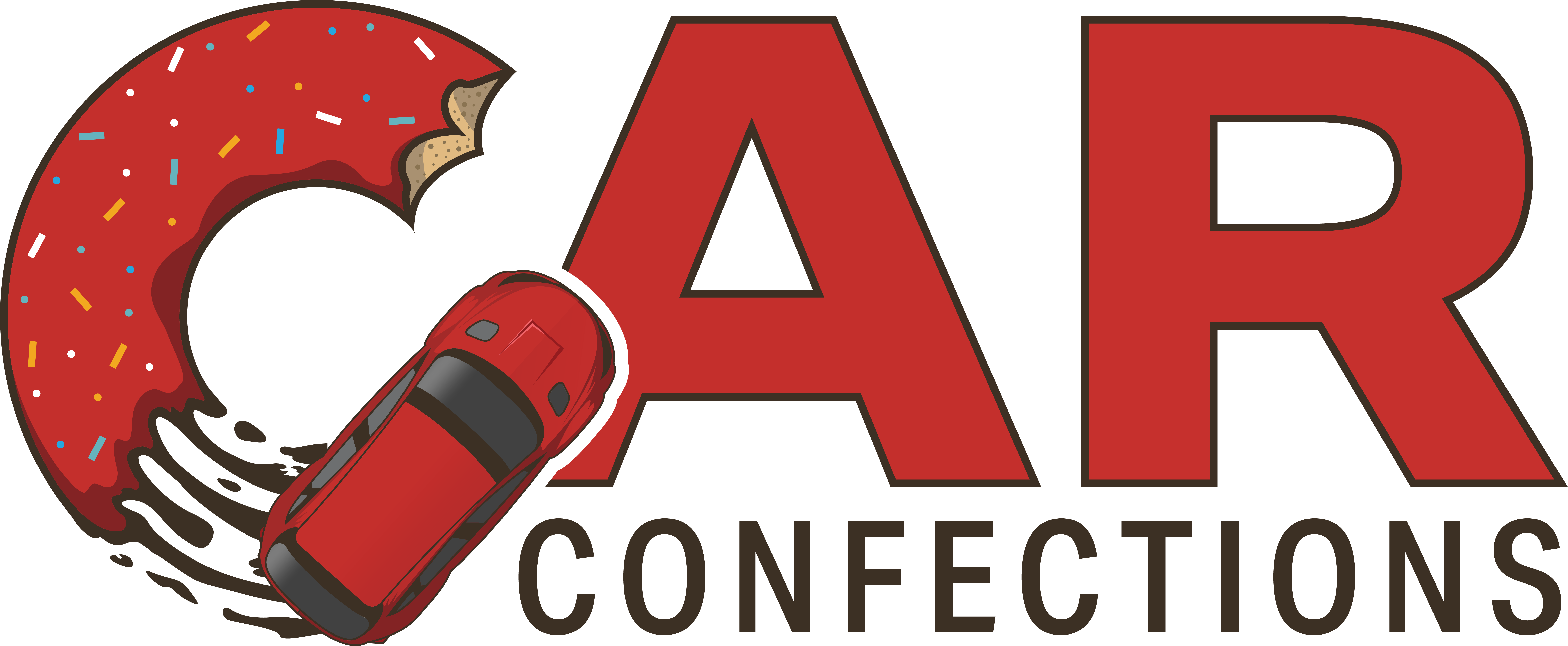
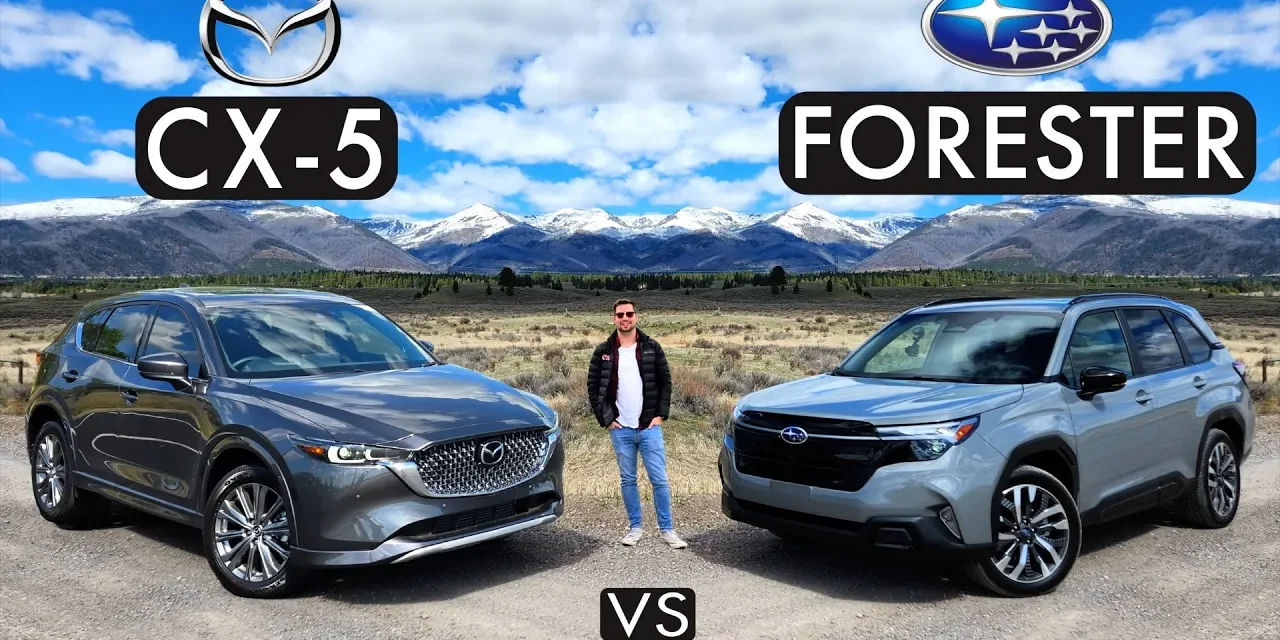
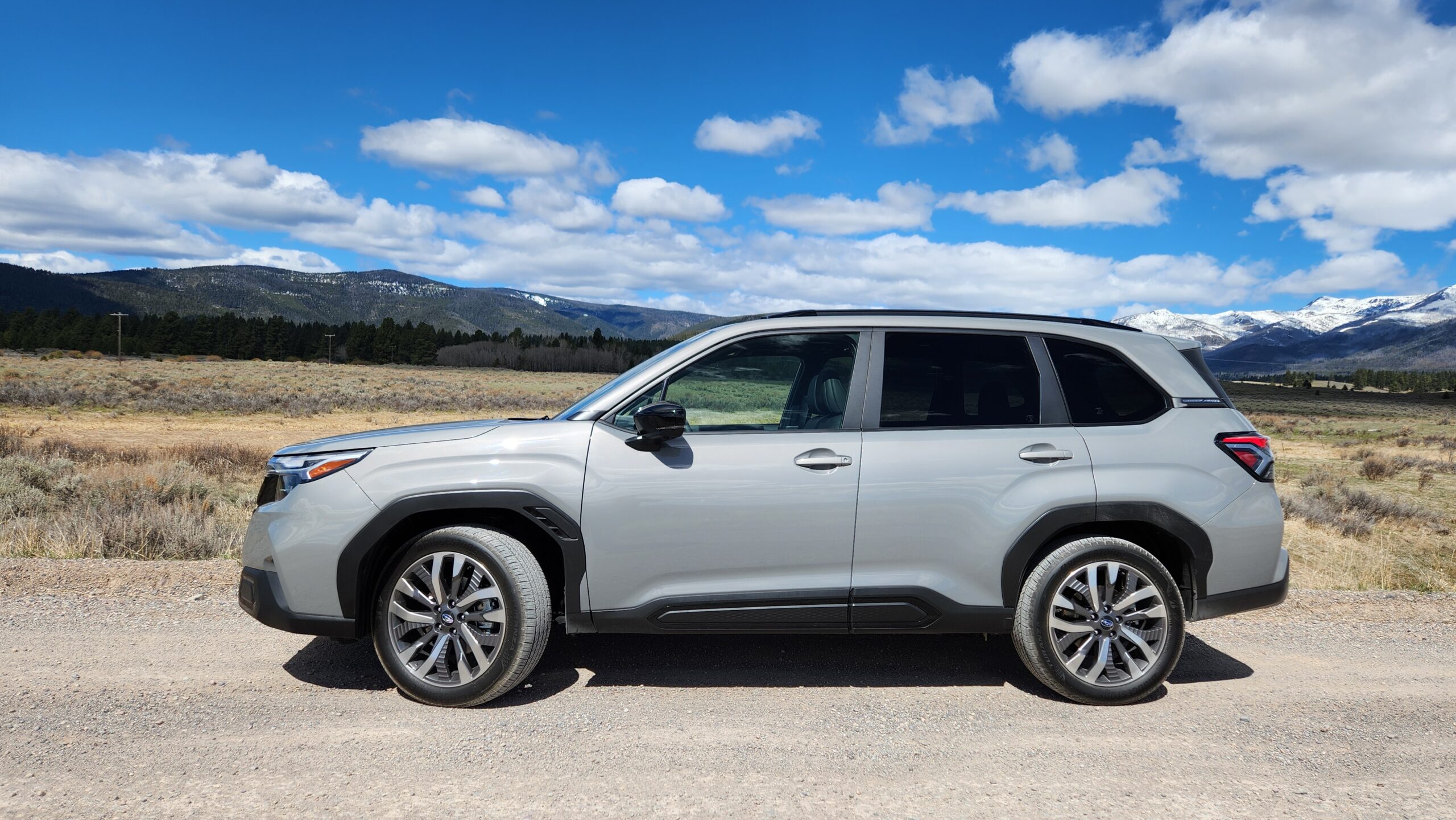
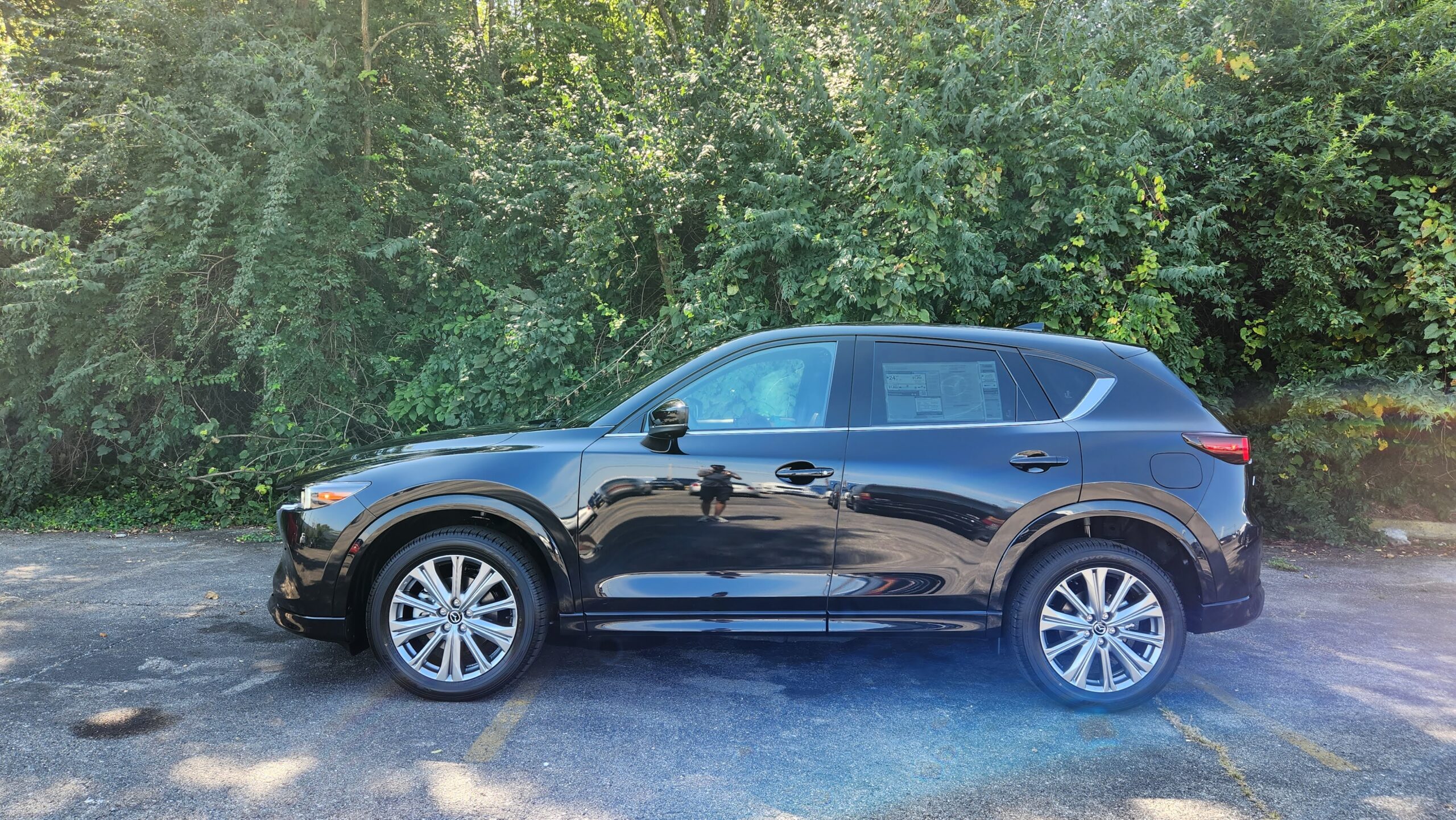
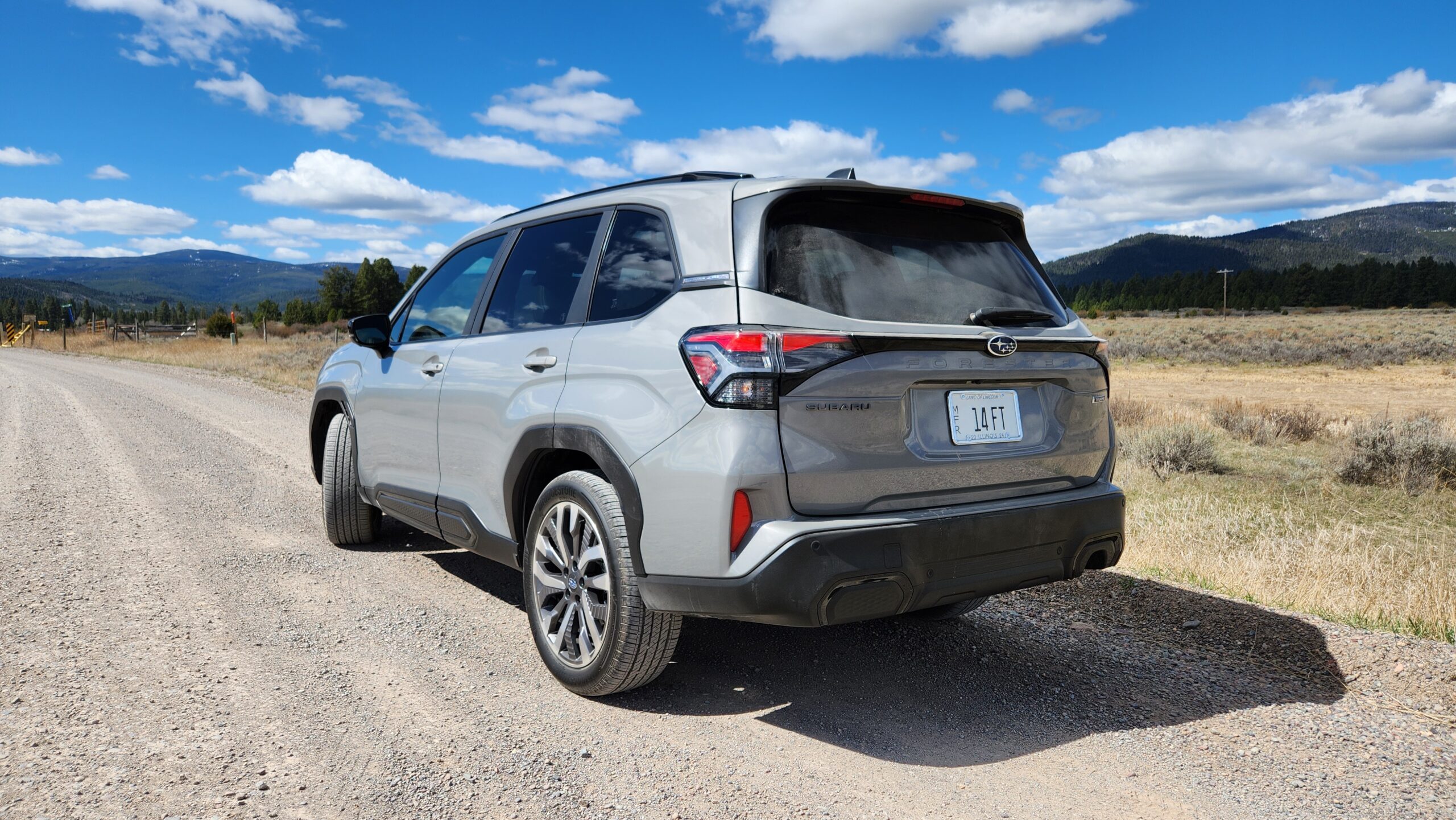
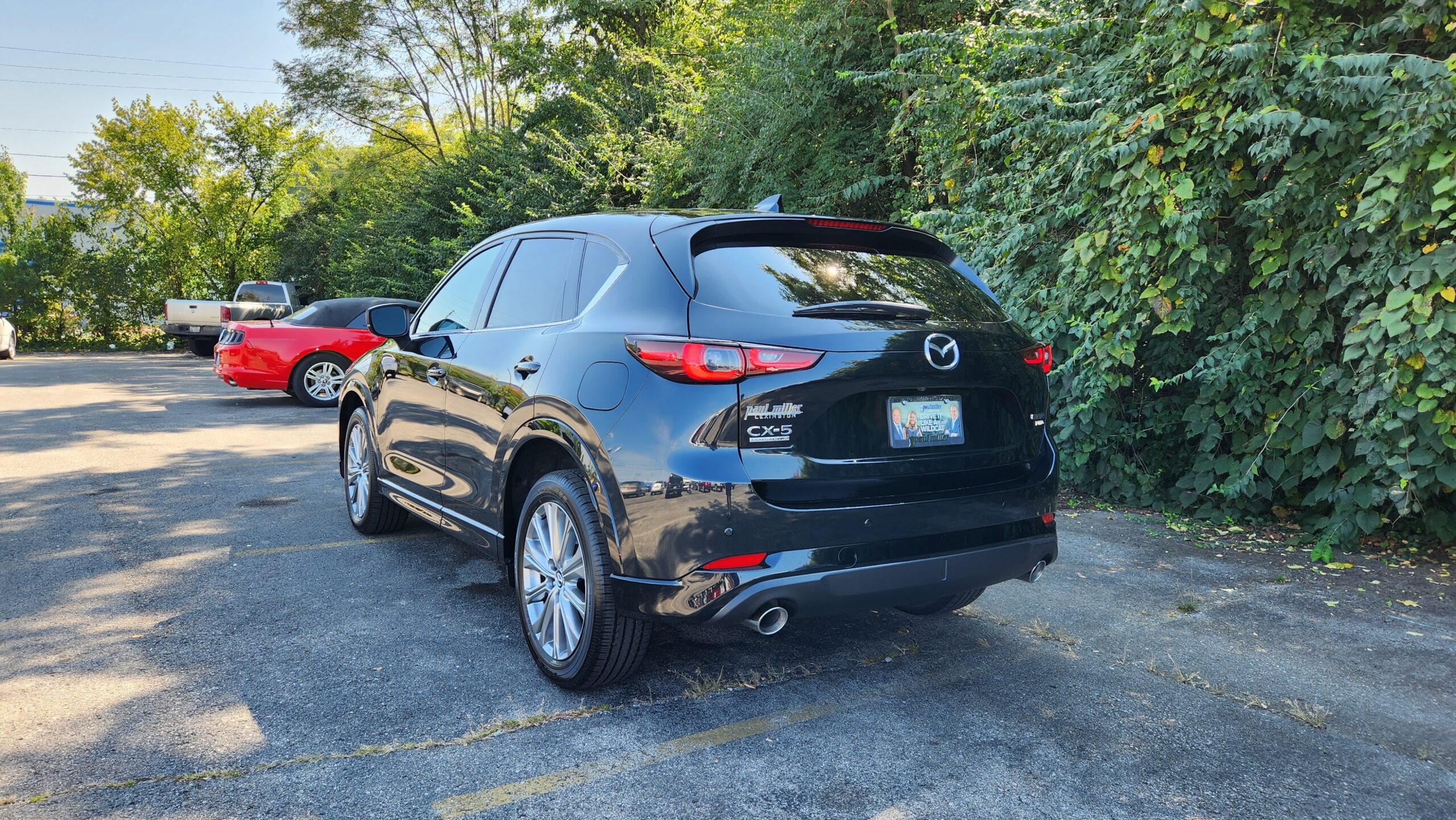
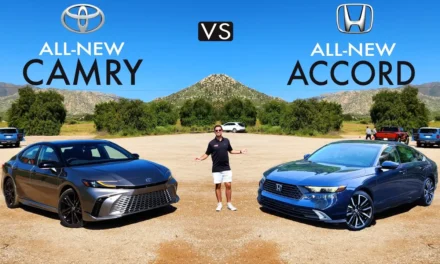
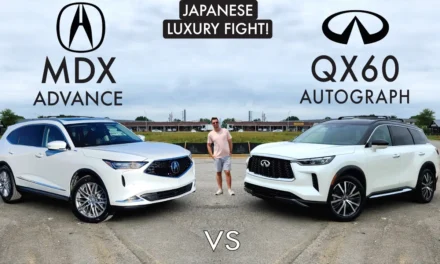
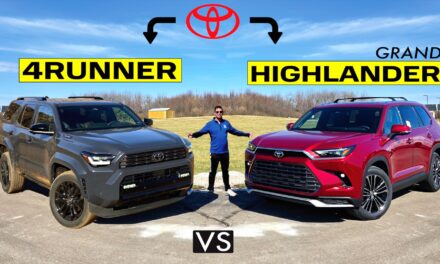
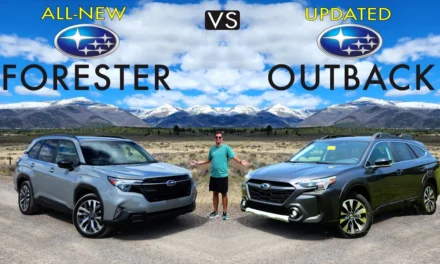

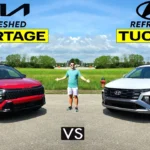

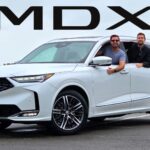
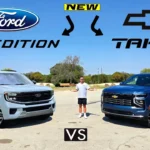

Recent Comments